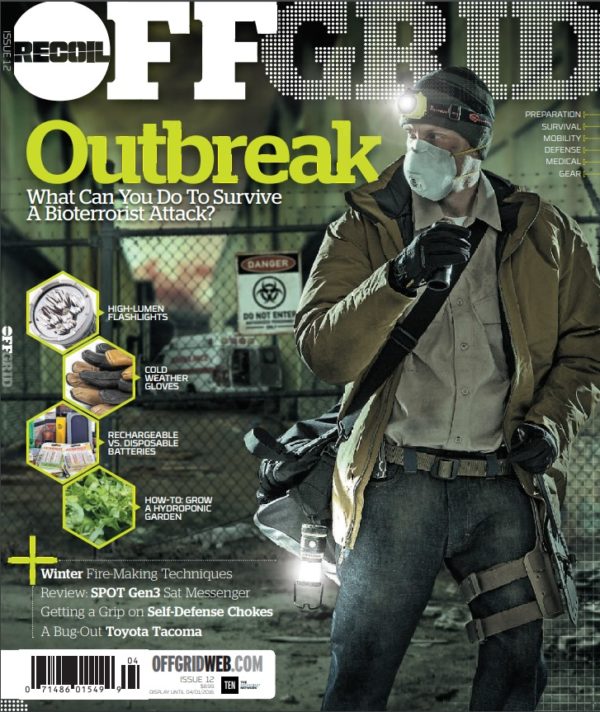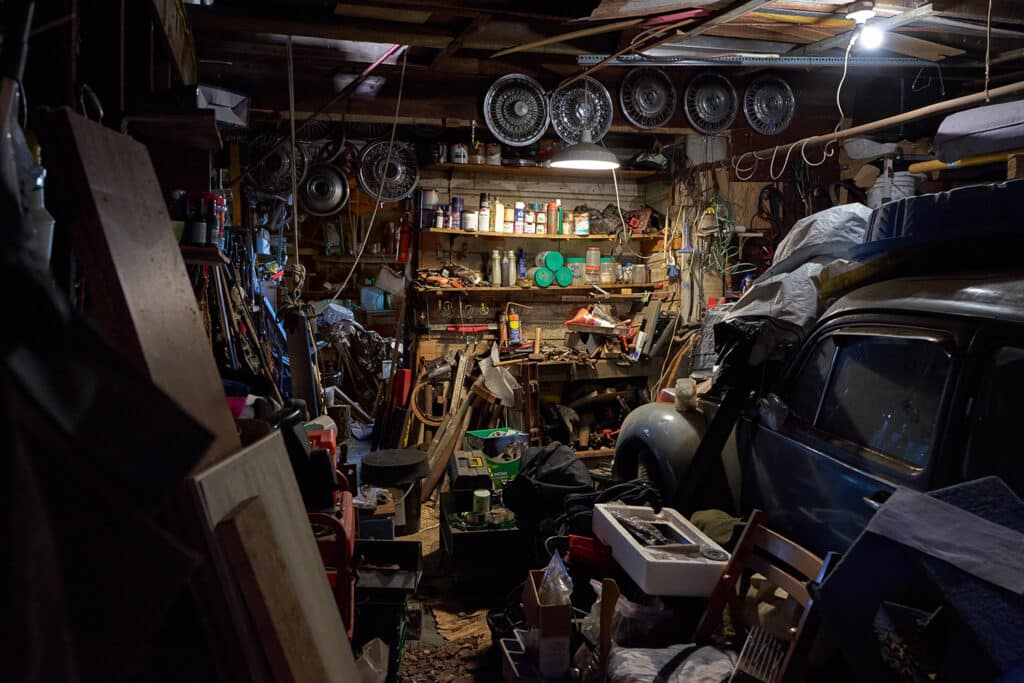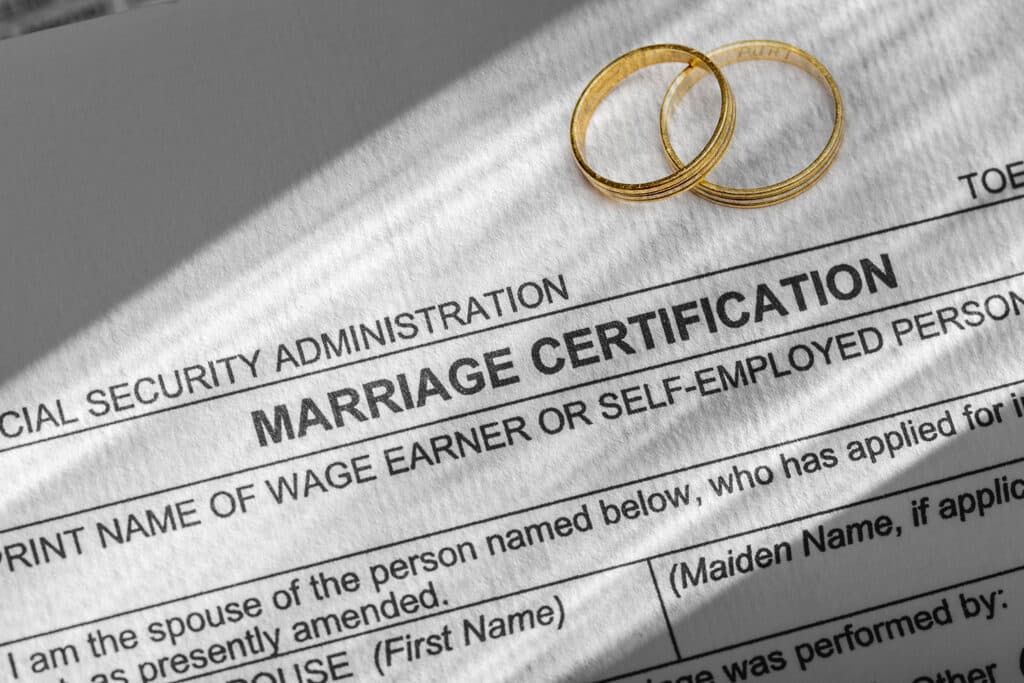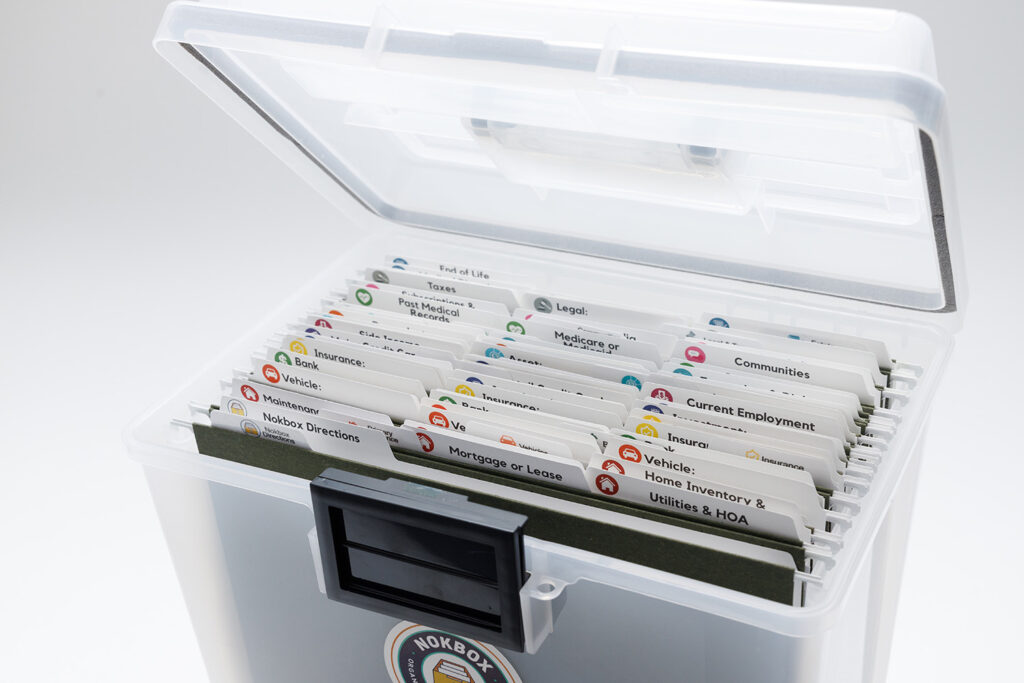RECOIL OFFGRID Preparation The Death File
In This Article
The Doors frontman Jim Morrison said it best. “No one here gets out alive.” At some point every single one of us is going to shuffle off this mortal coil and move on to whatever lies beyond. Few of us get to choose the time, place, and manner of our demise.
Make no mistake, financial preparedness should absolutely be part of your prepping plan, and that includes planning for how your family should handle things when you pass. This is especially important if you’re the bookkeeper for the household.
My dad died in July of 2019. It was a longtime coming, as he’d been in poor health for a few years prior to his death. Suffice it to say, it wasn’t exactly a surprise. After my mother had died about a decade earlier, I started asking him about his own last wishes and such. All he would say is that everything I would need was in a file in his desk. He’d then change the subject and refuse to discuss it further.

When he died, I located the folder. Inside was a very bare-bones will that was two pages long, and that’s it. Nothing about last wishes, no estate information at all. Ownership of his home, along with the mortgage and other attached debts, transferred automatically to me (see Transfer on Death Deed sidebar). We also had information about some of his utility accounts, as we’d been paying a few of them by then.
But that’s about all we knew at that point, and it got ugly quickly after that.

The level of disarray found in many basements, attics, and garages can be remarkable, and that’s just the beginning when it comes to closing an estate.
It seemed like every day we were finding out about money he owed to this or that company. He’d not kept up on the maintenance of the house, and numerous repairs were needed before we could put it up for sale. All the while, my wife and I were paying the mortgage on it, as well as paying for the repair work that we couldn’t handle ourselves.
Through this entire process, which took months, there was so much to do that there was no time to just grieve for our loss. So much of it could’ve been avoided had he just taken the time to plan ahead.
Don’t do that to your family. Take responsibility and put together your Death File.

Few of us have unlimited budgets but seriously consider retaining an attorney to help you set up the legal components of the Death File.
Sure, that name is a little morbid. Change it to whatever you’d like. Some folks label it In Case of Death or It’s Your Problem Now. The idea here is to collect, collate, and curate as much information that your family will need upon your passing and put it all in one place.
It might be referred to as a “file,” but more likely it’ll be a collection of files, or perhaps a binder with divided sections within. Use whatever organizational scheme works best for you. Don’t rely on digital media for this, either. The Death File should consist of hard copies of everything. If you want to supplement it with digital copies as well, more power to you.
The reason for actual paper copies is that digital files could be lost in a computer crash or just flat out be inaccessible if someone doesn’t know the password to log into the system. Plus, in many cases, you’ll need to have hard copies of certain documents in hand to present to someone, such as when dealing with healthcare directives at the hospital.
So, what should be in your Death File?

Estate planning should involve far more than just deciding who gets saddled with your grandmother’s collection of tiny spoons.
If you’ve already made funeral arrangements, that information should be detailed. If you haven’t done so, then you should include any specifics you desire, such as if you want to be cremated, and, if so, do you want your ashes scattered somewhere? Are there certain flowers you would like present at your service? Any special music played? Is there anything specific you want included in your obituary? Anyone in particular you want appointed to be pallbearers?
This is also where you could include instructions to your next of kin regarding any pets you have. Are certain family members supposed to take possession of them? Are there provisions for their care?
It’s important to note that a last wishes document isn’t legally binding. It isn’t your will. It’s simply information that your family will hopefully consider as they move forward.

Safes are great for protecting valuables, but make sure your next of kin know how to get into them.
There are several legal documents that should be present in your Death File. The Last Will and Testament appoints the executor of your estate and specifies what you want done with your assets.
The Living Will states your medical treatment preferences if you’re unable to communicate them yourself. This includes things like life support and resuscitation. This is sometimes augmented by an Advance Directive. Among other things, that will appoint a proxy to make healthcare decisions for you if you’re unable to do it yourself.
Power of Attorney (POA) is what allows someone to make legal decisions for you. This includes buying or selling property on your behalf and often includes healthcare decisions. The scope of the POA can be detailed so as to be limited to certain capacities or functions.
This should include a list of every single account you have, such as checking, savings, money market, IRA, 401(k), and such. Provide the account number and any necessary contact information related to the account. A copy of a recent statement can be beneficial as well. It’s a good idea to include log in information for all of the accounts that are accessed online. Remember to update this information in the Death File any time you change the passwords on those accounts.
Include copies of your birth certificate, marriage certificate, divorce decree, and DD214 and other military records. Most of this might not turn out to be absolutely necessary, but it’s better to have it all in one place, just in case.
Here you should include information related to life, home, auto, and property insurance policies. You don’t necessarily need to include the entire policy for everything. But you should make sure to jot down the contact information for the insurance agents, along with any necessary account numbers and similar information. You might include a note as to where your family can find the full policies if they aren’t included here.
About four months after my dad passed, I received a call from an insurance company. It turned out that dad had one life insurance policy he’d never mentioned. They had discovered his death information when they were doing a routine file audit. The policy netted us a whopping $400.
Many of us have most of our routine bills set up on autopay. That’s not a bad thing. But you probably won’t need your gym membership renewed after you’ve died, right? Put together a list of every single bill that gets paid routinely, whether it’s on autopay or not. This would be things like credit cards, utilities, memberships, and loans. Include the company name, their contact information, and your account number. Make it as easy as possible for your family to know where to call to cancel the account and settle up the tab. Continuing to accrue charges doesn’t help anyone but the billing company.

It sounds counterintuitive, but your Death File should have information that’ll allow your family to open your email so they can send and receive messages.
Have a section in your Death File that spells out how to access all of your e-mail accounts, both work and personal. This is something that’s often overlooked but can be very important, especially when time is of the essence. While your employer should be able to access any work accounts, your family may need to get into your personal e-mail to check for messages there and respond as necessary. If family members need to access online accounts, the password reminders or generators for those sites will send messages to the e-mail accounts tied to them.
Along with e-mail, you should list the log in information for any social media accounts you maintain. You might also include a list of specific people your family should reach out to and notify of your passing. Many of us have developed several contacts online through social media that our families might not know. That’s not because you’re hiding something, of course. It’s just the nature of social media. We have work colleagues, we have real-life friends, and then we have our imaginary friends we only interact with on Facebook and Instagram. Those online contacts can then help spread the word through the various groups and such to which you might belong.
You should list the locations for all spare keys, as well as codes for gates, combination locks, and the like. Don’t forget about any keys you’ve hidden outside so you wouldn’t accidentally get locked out of the house.
If you maintain a safe or other secure location where you store cash, precious metals, important documents, and similar items, be sure to leave instructions on where to find those things and how to access them. My father had a small safe that stayed in his bedroom, but he never wrote down the combination. I ended up having to reach out to the manufacturer and jump through a few hoops to get them to send me the combination. I’m glad I went to the effort to do so, as that’s where we found a stash of antique money he’d received in a trade with someone many years prior.
Some people like to hide money or other valuables, rather than use a safe. If you’re one of those folks, now’s the time to reveal those hiding places. Think about it like this. In many cases, family is going to sell your home. Do you want those valuables going to the buyers? If not, make sure your survivors know where to look and what they should find there.
One more thing to consider adding to your Death File are notes or letters to your loved ones. This is an opportunity to share with them what they’ve meant to you. This can be particularly important for those who have difficulty expressing their emotions to their loved ones. These sorts of letters can help bring closure to your grieving family. Write as much or as little as you’d like. You might go so far as to provide explanations for any bequeathments that might cause friction among family members. Doing so may help ease tensions, particularly if things are already contentious among certain people in the family.

The Death File should have copies of all of your important documents, including marriage certificates and divorce decrees if applicable.
Once you start putting the Death File together, the question becomes where will you keep it? As with everything else, there’s no one size fits all answer. But consider that your family will need to know where to find it, and they should be able to access it easily. This isn’t the time to leave a trail of clues for them to try to follow one after another. As much fun as that might sound, be practical.
A fire-resistant lock box would be a great way to store the Death File. Going through all this work only to have the file be destroyed in a house fire would be truly unfortunate. Just make sure your family knows where to find the key to open the box.
Wherever you decide to keep it, make sure you update it regularly, such as when you change passwords to any accounts. This isn’t a one and done sort of project. It’s much more of an ongoing sort of thing, or at least it should be. Make a point of revisiting it at least twice a year to bring all the information current.
Losing a loved one, especially a parent, can be traumatic. It takes a while for grief to pass, even under the best of conditions. Add in the stress of closing out an estate, especially one that’s monumentally disorganized, and it can take months or even years to get through it. Give your family the gift of time to grieve by making things as easy as possible for them. The Death File will go a long way in that regard.
In many states, establishing a Transfer on Death Deed (TOD) allows you to transfer ownership of real estate to a beneficiary without going through probate. This can potentially save serious amounts of money. The TOD might be called a revocable transfer on death deed, a “Lady Bird” deed, or beneficiary deed in some areas.
Without getting into all of the legalese, the high points to remember are that the TOD only takes effect when the owner dies. Until that happens, the beneficiary has zero rights to the property and the owner retains full control of it. The TOD can be revoked or modified at any time by the owner.
This isn’t something the average layperson should set up on their own. Consult an attorney who is experienced in estate planning and have them draw up the paperwork. They can also explain how a TOD will work in your specific situation.

In 2021, Marla’s father died. Just like what happened in my situation, as well as what happens to thousands of other people every year, she quickly realized there was so much more to closing an estate than simply locating and reading the will, if the decedent had even gone that far with their planning. Marla and her family spent countless hours trying to track down bank accounts, investment accounts, and so much more — all while grieving the loss of their patriarch.
This experience eventually led to the creation of the Nokbox. It’s sort of a one-stop shop for estate organization to make things easier for your next of kin. The core system consists of 15 colored and labeled hanging file folders. These are for the organizational categories, such as legal, medical, income, assets, primary residence, and bank accounts.
Within each of these folders are several subfolders to further organize the information. For example, in the primary residence folder, you’ll find subfolders for mortgage or lease, utilities & HOA, maintenance & repairs, people, and home inventory & other information. From there, it drills down further through the use of worksheets that are filled out with important information, such as listing all of the utility companies and how to contact them. On the reverse of the worksheet is a detailed list of instructions for the next of kin.
There are also two zippered bags. One is for critical documents, such as passports, property deeds, and birth certificates. The other is for keys for home, vehicles, and such. Both of these bags are intended to be kept in a locked safe or other secure location.
It all comes packaged in a watertight plastic file box. This is a great system, particularly for those who aren’t prone to keeping things organized.
Find it at thenokbox.com

Jim Cobb is a nationally recognized authority on disaster readiness. He has been involved with preparedness for nearly 40 years and has developed a reputation for his common-sense approach to the subject. In addition to his numerous books and several hundred magazine articles, Cobb is one of the co-hosts of the How to Survive 2025 podcast. He offers a free weekly newsletter called The Survival Weekly Dispatch jimcobb.substack.com
Don’t miss essential survival insights—sign up for Recoil Offgrid's free newsletter today!
Check out our other publications on the web: Recoil | Gun Digest | Blade | RecoilTV | RECOILtv (YouTube)
Editor's Note: This article has been modified from its original version for the web.
 STAY SAFE: Download a Free copy of the OFFGRID Outbreak Issue
STAY SAFE: Download a Free copy of the OFFGRID Outbreak Issue
No Comments